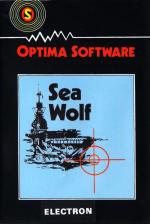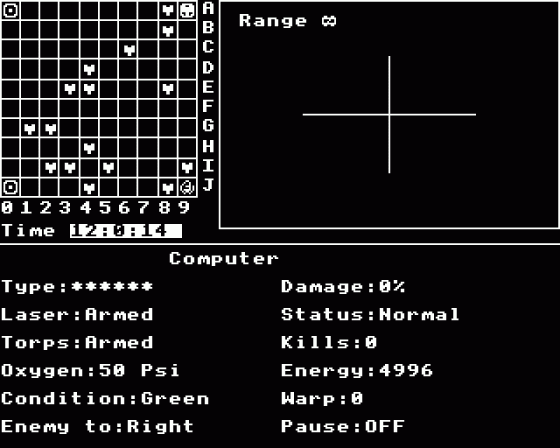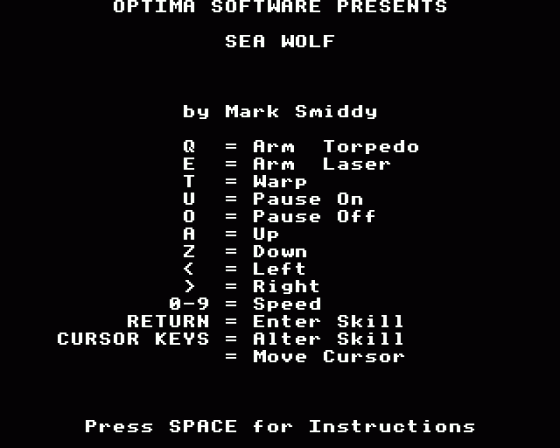
Acorn User
 1st March 1984
1st March 1984
Commotion Under The Ocean
Sea Wolf
At first glance, this looks like just another Star Trek derivative, but hidden inside is an absorbing game.
You're in the Sea Wolf, a nuclear submarine, sent to sink fifteen enemy ships. You select your skill level: rating, ensign, gunner, captain or commander and off you go. On the left of the screen is a chess-board grid showing the position of all the enemy boats; to the right a view through the periscope - with cross-wire sights for aiming the laser or torpedoes. In the bottom half of the screen are all kinds of data: energy and oxygen, number of 'kills', morale of crew, etc. Everything except the speed you're travelling (selected by keys 0-9 and indicated by 'engine tone').
The display is in boring white and black - until condition yellow or red show you're in trouble. Your projectiles are coloured too, and when a target's about to sink it turns psychedelic first. The sound effects are realistic too.
So you venture away from base. The cursor keys move you provisionally around the grid and when you're happy with the position, and the amount of energy it'll take to get there, you press f4 to 'warp'. And so into combat. The display tells you what kind of ship is hanging around in this zone: tanker, destroyer, carrier, cruiser, battleship and so on and if the enemy is to the right or left. You move the sights using A and Z for up and down, and < and > for left and right. Select lasers (f0) or the weaker torps (f2) and fire using spacebar. A few shots and the ship's destroyed. It can get you though - and if you're moving too fast you can ram the ship and end the game. You don't have to destroy the enemy ship to leave the zone, and you can return to base at any time to replenish supplies (though this is considered wimpish by fleet command).
Periodically, the positions of the enemy ships change (according to predefined rules, says the instruction booklet). Good tactics are rewarded with promotion, poor tactics may result in demotion. The game is played in real-time, against the clock.
A couple of disappointments: on the periscope display all the ships, whether carriers or frigates, look exactly the same. And the size of the target ship remains the same, however close you are. Worst of all, the game blurts out its congratulations even if you play atrociously!






